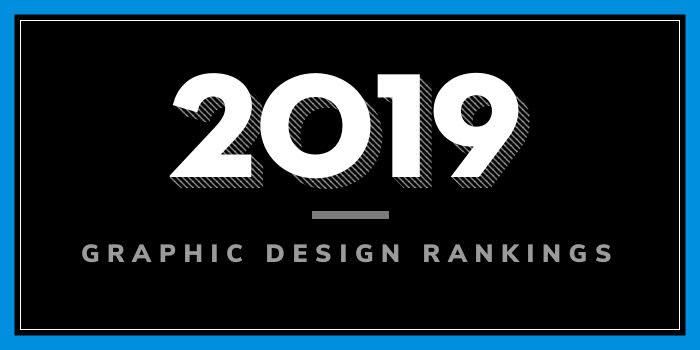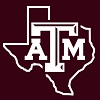
| Ranking | School | State | % |
|---|---|---|---|
| 1 | University of Texas at Austin | Texas | Top 2% |
| 2 | University of North Texas | Texas | 3% |
| 3 | Arizona State University | Arizona | 4% |
| 4 | Colorado State University | Colorado | 5% |
| 5 | Brigham Young University | Utah | 10% |
| 6 | University of Houston | Texas | 10% |
| 7 | Texas A&M University, Commerce | Texas | 10% |
| 8 | University of Houston, Clear Lake | Texas | 15% |
| 9 | Northern Arizona University | Arizona | 15% |
| 10 | Utah State University | Utah | 15% |
Our 2019 ranking of the Top 10 Graphic Design School Programs in the Southwest. We considered 78 colleges in the Southwest with graphic design programs for this year's rankings. For an explanation of our ranking criteria, click here. For ranking purposes we define the Southwest as Texas, Oklahoma, Colorado, Utah, New Mexico, Nevada, and Arizona
 1. University of Texas at Austin, Austin, Texas (top 2% of colleges considered)
1. University of Texas at Austin, Austin, Texas (top 2% of colleges considered)
The University of Texas at Austin (UT Austin) was founded in 1881. The school opened its doors in 1883 with one building, eight professors, one proctor, and 221 students. Today, UT Austin is home to nearly 52,000 students enrolled in over 500 degree programs and fields of study across 18 colleges and schools. The College of Fine Arts, Department of Art and Art History has several programs for aspiring graphic designers. Options include BA, BFA and MFA degrees in Design, and a BFA in Visual Studies.
Students in all programs have the opportunity to complete an internship, which may include working at major companies with offices in the Austin area. Just a few include Google, Dell, IBM, Apple, Samsung, Frog, Pentagram, and EA Games.
 2. University of North Texas, Denton, Texas (top 3% of colleges considered)
2. University of North Texas, Denton, Texas (top 3% of colleges considered)
University of North Texas (UNT) was founded in 1890 as Texas Normal College and Teachers’ Training Institute. With 38,000 students enrolled, UNT is the fourth-largest university in Texas. The school offers 105 bachelor's, 88 master's and 37 doctoral degree programs across 11 colleges and schools. The College of Visual Arts & Design is home to the Design Department, which houses the Communication Design Program. Program options for aspiring graphic designers include BFA, MA, and MFA degrees in Communication Design.
The BFA program covers the basic principles of design, image making, color theory and typography. It is also designed to “help students learn to be effective conceptual thinkers and, most importantly, creative problem solvers in the disciplines of Advertising and of Graphic Design.” The 36 credit hour MA in Communication Design and the 60 credit hour MFA in Communication Design are both taught as concentrations in Design Research.
Students in all Graphic Design programs have the opportunity to complete an internship, study abroad, and access “valuable resources” consisting of over 1,000 reference books, magazines and paper/print samples of photography, illustration, typography, graphic design and advertising.
 3. Arizona State University, Tempe, Arizona (top 4% of colleges considered)
3. Arizona State University, Tempe, Arizona (top 4% of colleges considered)
Founded in 1885, Arizona State University (ASU) is home to more than 100,000 students (2017) enrolled in over 290 academic undergraduate programs and hundreds of graduate programs across 17 colleges and schools. The Tempe campus is home to nearly 52,000 students, making it the largest campus in the ASU system.
The ASU Herberger Institute for Design and the Arts houses the Design School, which offers programs in the areas of Architecture, Environmental Design, Industrial Design, Interior Design, Landscape Architecture, Urban Design and Visual Communication Design/VCD (Graphic Design). Visual Communication Design (VCD) options include a BSD in Graphic Design, an MSD with a Concentration in Visual Communication Design (VCD MSD), and a Master of Visual Communication Design (MVCD).
The BSD allows students to work on projects in the areas of Information Design, Interaction Design, Exhibition Design, Animation, Motion Graphics, Branding, Publication Design, Web Design, Interface Design and multiple contemporary facets of sensorial design. The MSD for individuals interested in “advanced studies in visual language, history, theory, criticism and methodology, design processes and technology.” The degree “develops an understanding of contemporary graphic design issues through specialized research and design skills. It also prepares the graduate student for a career in graphic design education.”
The MVCD has two options—a two-year studio-based program and a 3+ program. The two-year studio program is designed for students with a degree in VCD or Graphic Design and a 3+ program is designed to be a first professional degree for those students who do not have an undergraduate degree in VCD or Graphic Design.
 4. Colorado State University, Fort Collins, Colorado (top 5% of colleges considered)
4. Colorado State University, Fort Collins, Colorado (top 5% of colleges considered)
Founded in 1870 as the Colorado Agricultural College, Colorado State University serves nearly 33,500 students enrolled in more than 250 programs, over 50 minors, and several advising tracks through eight colleges and a graduate school. The College of Liberal Arts houses the Department of Art and Art History, which offers two programs for aspiring graphic designers. Options include a BFA in Art with a Concentration in Graphic Design and an MFA in Graphic Design.
The BFA program requires a minimum of 120 credit hours of study to graduate. Course highlights include Digital Visual Fundamentals, Printmaking I-Intaglio and Relief, Typography and Design Systems, and Advanced Illustration. Students will have the opportunity to complete an internship and completion of a BFA program is also part of the program.
The MFA program emphasizes conceptual problem-solving and technical proficiency. Program highlights include a semi-private studio for the duration of the program, regular discussions with faculty in the areas of graphic design theory, history, and professional practices, and participation in the biennial Colorado International Invitational Poster Exhibition, where students assist in organizing and presenting the event.
 5. Brigham Young University, Provo, Utah (top 10% of colleges considered)
5. Brigham Young University, Provo, Utah (top 10% of colleges considered)
Brigham Young University (BYU) was founded in 1875 by The Church of Jesus Christ of Latter-day Saints (LDS). Home to approximately 33,633 students from all 50 states and more than 100 countries, BYU offers more than 370 undergraduate majors and minors, master’s programs and doctorate programs. The school houses dozens of colleges, schools, and departments that offer everything from Accounting to Visual Communications.
The College of Fine Arts and Communications serves nearly 5,700 students enrolled in programs in the Department of Art, the School of Communications, the Department of Dance, the Department of Design, the School of Music, and the Department of Theater and Media Arts. Communications is one of the College’s top six majors by graduation.
Programs for aspiring graphic designers can be found in several departments and schools. Options include BA and BFA degrees in Graphic Design, a BFA in Art with a Focus in New Genres or Printmaking in the Department of Art, and Minors in Design or Advertising Design in the Department of Design. Other areas of study include Interaction Design, Motion Design, Visual Development, and Branding. Note that because the Graphic Design Program is so competitive, enrollment is limited to just 40 students.
 6. University of Houston, Houston, Texas (top 10% of colleges considered)
6. University of Houston, Houston, Texas (top 10% of colleges considered)
Founded in 1927, the University of Houston (UH) is home to more than 46,300 students enrolled in 300+ academic programs across 12 colleges and the UH Law Center. The Kathrine G. McGovern College of Arts houses the School of Art, which offers several programs for aspiring graphic designers. Options include a BFA in Graphic Design, an MFA in Studio Arts with a Concentration in Graphic Design, and a Minor in Studio Arts.
All design students have access to the school’s large internship program, which highlights jobs with both national and international companies. Students may also study abroad in dozens of countries around the world.
 7. Texas A&M University – Commerce, Texas (top 10% of colleges considered)
7. Texas A&M University – Commerce, Texas (top 10% of colleges considered)
Established in 1889 as East Texas Normal College in Cooper, Texas A&M University – Commerce (TAMU-Commerce) is the fifth oldest state university. The school, which has additional locations in downtown Dallas, Corsicana, Mesquite, McKinney, Midlothian and Rockwall, is the second largest university in the prestigious Texas A&M University System. Serving approximately 10,000 students, TAMU-Commerce offers 144 total areas of study at the undergraduate, master’s and doctoral levels, through four colleges.
The College of Humanities, Social Sciences & Arts houses the Department of Art offers a BFA in Visual Communication with an Emphasis in Design and an MFA in Art with an Emphasis in Visual Communication. The BFA in Visual Communication Design prepares students for careers in print. Per the school, the curriculum “encompasses logos and corporate identities, annual reports, packaging and billboards.” Course highlights include Design Communications, User Experience in Multimedia, Digital Imaging and Motion for Visual Communication, Typography, Motion Graphics, Letter Press, Advertising Art Concepts/Copywriting I, and Screenprinting for VisCom.
The MFA with an Emphasis in Visual Communication “explores creative process innovation; design development; inter-disciplinary design community initiatives; design-professional practice leadership, strategy, process and product; and design-teaching methodologies grounded in a social perspective.” The program consists of a capstone project that “addresses an issue of social, educational, environmental or business significance utilizing research methods that yield new knowledge in the chosen field of study. The Visual Communication Design research culminates in a final research paper and exhibition.”
Students in all programs will have the opportunity to complete an internship and study abroad opportunities are also available. Per the school, graduates of the Visual Communication Programs at TAMU Commerce “have risen to leading positions in the industry, both on a regional and national level, and in so doing have been instrumental in directing recent trends in graphic design.”
 8. University of Houston - Clear Lake, Houston, Texas (top 15% of colleges considered)
8. University of Houston - Clear Lake, Houston, Texas (top 15% of colleges considered)
University of Houston – Clear Lake (UHCL) opened in 1974 with freshman- and sophomore-level classes. Today, the school is a four-year university that serves more than 9,000 students enrolled in more than 80 undergraduate and graduate degree programs and three doctoral programs through four colleges. The College of Human Sciences and Humanities offers an Art and Design BFA with a Graphic Design Concentration.
Per the school, the program prepares students “for a professional career as a graphic artist, while supported by a solid liberal arts foundation.” Not only will students learn “cutting-edge techniques,” they will also “understand the aesthetic roots” of the discipline.
Course highlights for the 120 credit hour program include Digital Photography, Design Foundations, Learning Frameworks, Ideas in Transition, Design Foundations, and History of Graphic Design. All Graphic Design students must take 15 hours of Studio requirements, 12 hours of Electives at the 3300/4300 level, and 21 hours of Graphics Concentration courses consisting of seven courses at the 3300/4300 level.
Graduates of the program will “play an integral part” of their “company’s success by creating its advertisements, brochures, magazines, flyers and reports.”
 9. Northern Arizona University, Flagstaff, Arizona (top 15% of colleges considered)
9. Northern Arizona University, Flagstaff, Arizona (top 15% of colleges considered)
Northern Arizona University (NAU) was established in 1899. The school serves more than 31,000 students enrolled in nearly 300 undergraduate, graduate, and certificate programs through nine colleges and dozens of departments and schools. The College of Social and Behavioral Sciences houses the School of Communication, which offers a BFA in Visual Communication with a Graphic Design Emphasis.
Per the school, through “rigorous coursework, students will develop skills in using aesthetic and conceptual judgment, color, type, symbols, digital images, multi-media, interactivity, motion graphics, photography, and project management to produce messages that clearly inform, effectively communicate brand experience, and persuade viewers.” Course highlights include Promotional Communication, Communication Design, Graphic Design I-V, Advanced Graphic Design Topics, Visual Communication Studios, Public Relations Writing, and 2D Design Fundamentals.
Students will have the opportunity to complete supervised field experience in an appropriate agency or organization or Visual Design Lab, an experiential professional practicum with an emphasis on “project research, problem discovery, development of design solutions, and implementation of professional communication design projects in collaboration with peer design teams and selected client-partners. “
Graduates of the NAU BFA in Visual Communication program are prepared to seek positions in Advertising Design, Graphic Design, Illustration, Experience/Interface Design, Interaction Design, Corporate Media Design, and Print Production Design. BFA alumni have gone on to start “successful independent design practices” and land positions at some of the country's leading firms, including Body Glove, Yahoo! Games, Teva, and Nike.
 10. Utah State University, Logan, Utah (top 15% of colleges considered)
10. Utah State University, Logan, Utah (top 15% of colleges considered)
Utah State University (USU) was founded in 1888 as the Agricultural College of Utah. Today, the school serves nearly 28,000 students across the main campus, three regional campuses (Brigham City, Tooele, Uintah Basin), a Comprehensive Regional College (USU Eastern with campuses in Price and Blanding), and extension offices in 28 of 29 Utah counties and at the Ogden Botanical Center, Thanksgiving Point, and Utah Botanical Center.
USU offers around 400 undergraduate, graduate, and minor programs through eight colleges. Caine College of the Arts houses the Department of Art + Design, which offers a BFA in Graphic Design. Per the school, Graphic Design students “receive training in collaboration, innovation, theory, professional practice, technical competence, history, creative processes and sustainability.”
Program highlights include the Hashimoto Communication Arts Seminar (lecture seminars by professional guest artists in illustration and graphic design) and the opportunity to take an Advanced Internship/Coop designed for students needing “complexity and a more professional level of experience in the workplace.” Sample courses for the program include Brand Identity Design, Typography, Type, Image, and Visual Continuity, Motion Design, Illustration Concepts, and Graphic Interface Design.
This “competitive program culminates in the creation of a professional portfolio that helps” USU BFA graduates land positions “in prestigious national and international design studios and advertising agencies.”

